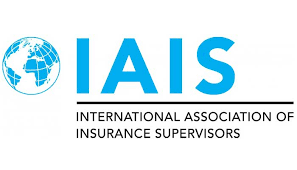
On 14th November 2018 the International Association of Insurance Supervisors (‘the IAIS’) published a consultation paper on their proposals for a “Holistic Framework for Systemic Risk in the Insurance Sector”. The consultation closed in January 2019. Links to the consultation paper and the responses submitted by the International Actuarial Association (‘IAA’) and Insurance Europe are below.
In the consultation paper the IAIS proposes a holistic framework to assess and mitigate systemic risk in the insurance sector, recognising that systemic risk may arise from both the collective activities / exposures of insurers at a sector-wide level as well as from the distress or disorderly failure of individual insurers. The key elements of the proposed framework are: (i) an enhanced set of supervisory policy measures; (ii) a global monitoring exercise by the IAIS; (iii) supervisory powers of intervention; (iv) mechanisms that help ensure the global consistent application of the framework; (v) an assessment by the IAIS of the consistent implementation of measures.
This framework would involve extending some of the measures that currently only apply to entities designated as globally systemically important insurers (‘G-SIIs’) to the broader insurance sector. Indeed the IAIS is of the view that the implementation of the holistic framework should remove the need for an annual G-SII identification exercise. They are recommending that between 2020, when the holistic framework is implemented, and 2022, when a review of it takes place, that the annual identification of G-SIIs is suspended. They recommend that a final decision to either discontinue or re-establish an annual identification of G-SIIs is made after the review of holistic framework in 2022.
The proposals in relation to enhancing existing supervisory policy measures are of particular interest to those working in ERM, as they focus in particular on supervisory assessment of sources of systemic risk, liquidity risk management, counterparty risk management and stress and scenario testing. Whilst much of this will be familiar in Europe given the Solvency II regime, some of the proposals are much more detailed and prescriptive than the Solvency II requirements, in particular in relation to liquidity risk. Other proposals that may eventually impact on insurers generally relate to potential additional data collection exercises by supervisors for the purposes of assessing systemic risk and the linking of supervisory powers to systemic risk concerns at a sector-wide level (as opposed to only in relation to an individual insurer).
In its response to the consultation, Insurance Europe notes that it has always argued that traditional insurance is not systemically risky, and that systemic risk can only originate from a very limited number of activities undertaken on a large scale in the wrong conditions. It emphasises that by extending some of the measures that currently only apply to G-SIIs to the broader insurance sector, the idea of proportionality and the consideration of cost and benefit aspects become crucial. It notes the need for the holistic framework for systemic risk to be compatible with other existing requirements. Amongst many other more specific comments, it also notes the potentially burdensome nature of the wide range of liquidity-oriented measures proposed.
Included in the IAA comments was a reminder that insurance has been an effective means of providing stability so that long-term commitments can be sustained, whether at an individual or corporate level. The IAA suggests that improved framing of the listing of systemic risk exposures, recognising their timeframe, and also that the traditional focus on systemic risk has arisen uniquely from a banking perspective; would allow a more precise and clearer linking of the possible needed powers and / or mitigants to address systemic risk in insurance.
The IAIS expects to launch a public consultation in June on the changes needed to their various supervisory standards related to the holistic framework for systemic risk. Current IAIS plans would result in adoption of the holistic framework at the IAIS Annual General Meeting in November.
On the 29th March 2019, EIOPA published a separate but related discussion paper on “Systemic Risk and Macroprudential Policy in Insurance” (link below). This is based on a series of three papers previously published by EIOPA. It contains specific proposals for additional macro-prudential tools or measures for consideration as part of the upcoming review of Solvency II. EIOPA note that they are closely monitoring related developments at the IAIS level. Similar to the IAIS, EIOPA’s proposals include the potential for additional data collection / monitoring, holding capital for systemic risk (which they refer to as a “capital surcharge”) and ORSA enhancements. Unlike the IAIS, EIOPA’s proposals in relation to liquidity risk are less prescriptive. The consultation on this discussion paper closed on 30th April 2019.
Miriam Sweeney works with MetLife Europe Ltd and is a member of the SAI's Enterprise Risk Management Committee.
The views of this article do not necessarily reflect the views of the Society of Actuaries in Ireland, the Enterprise Risk Management Committee, or the author’s employer. The article was edited by the Communications Subgroup of the Enterprise Risk Management Committee.